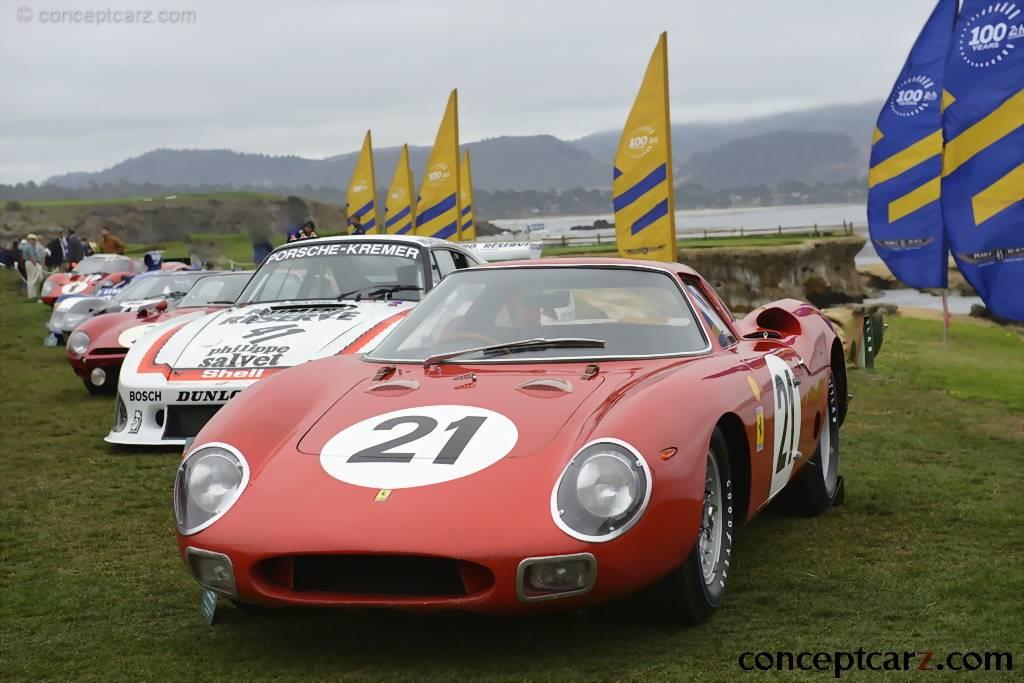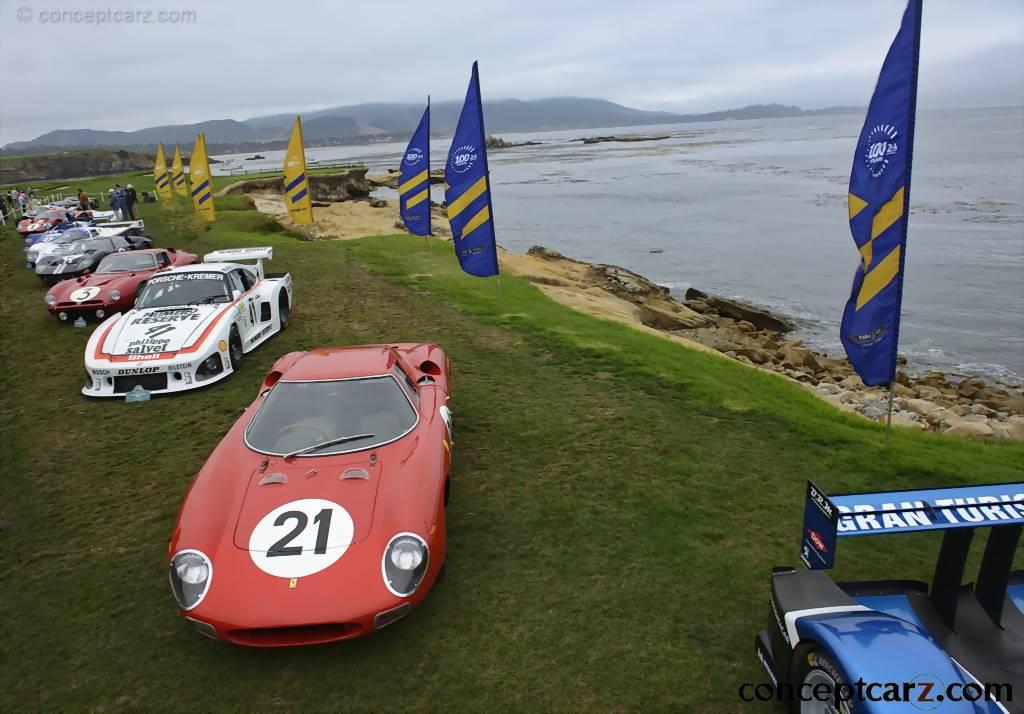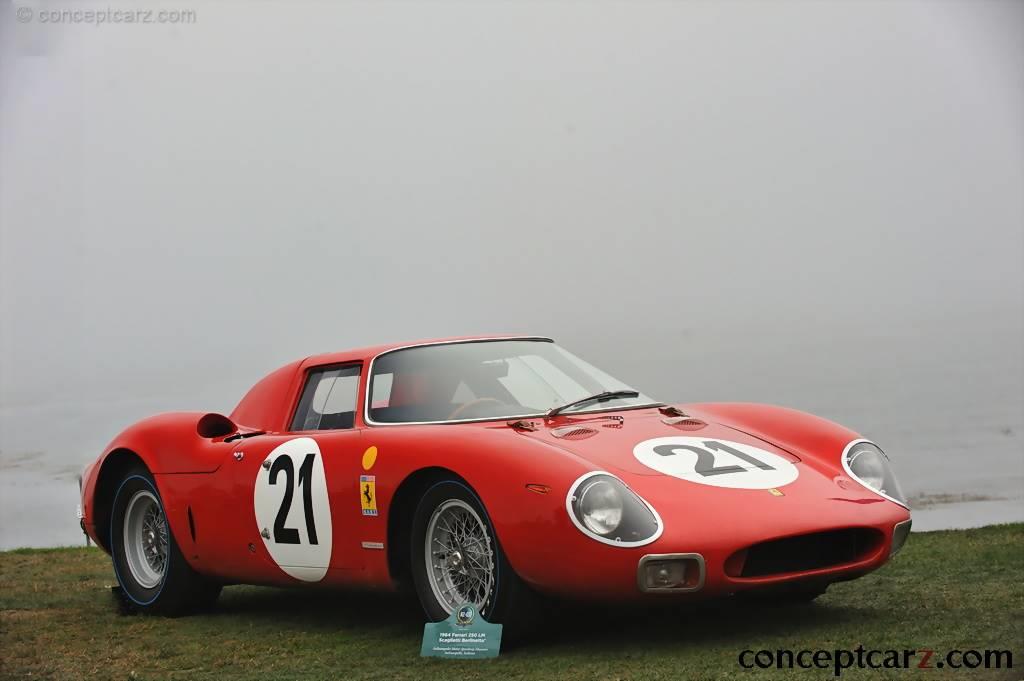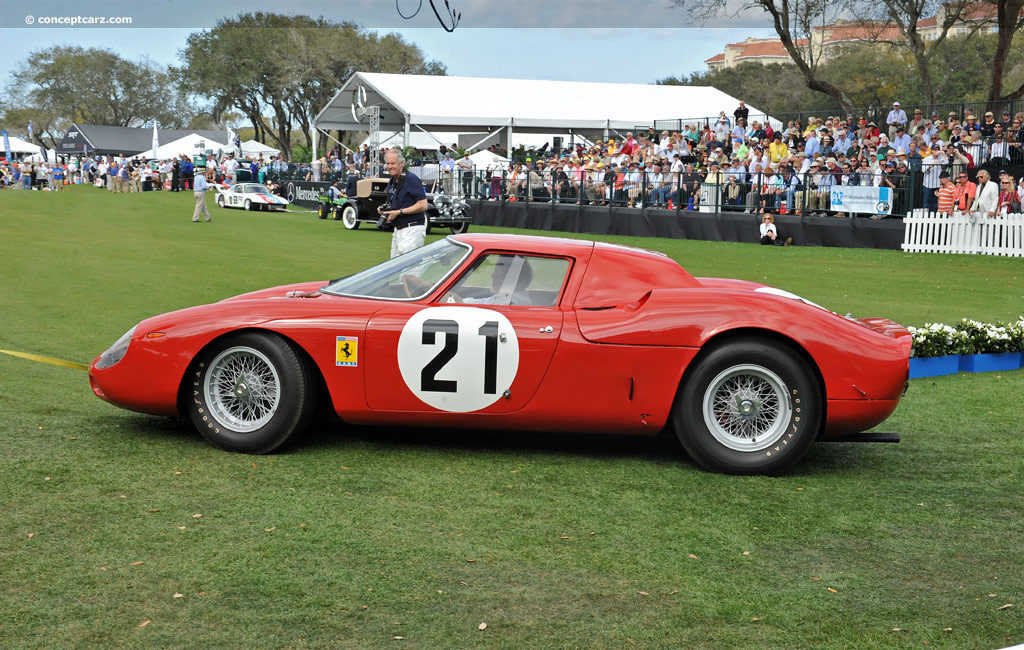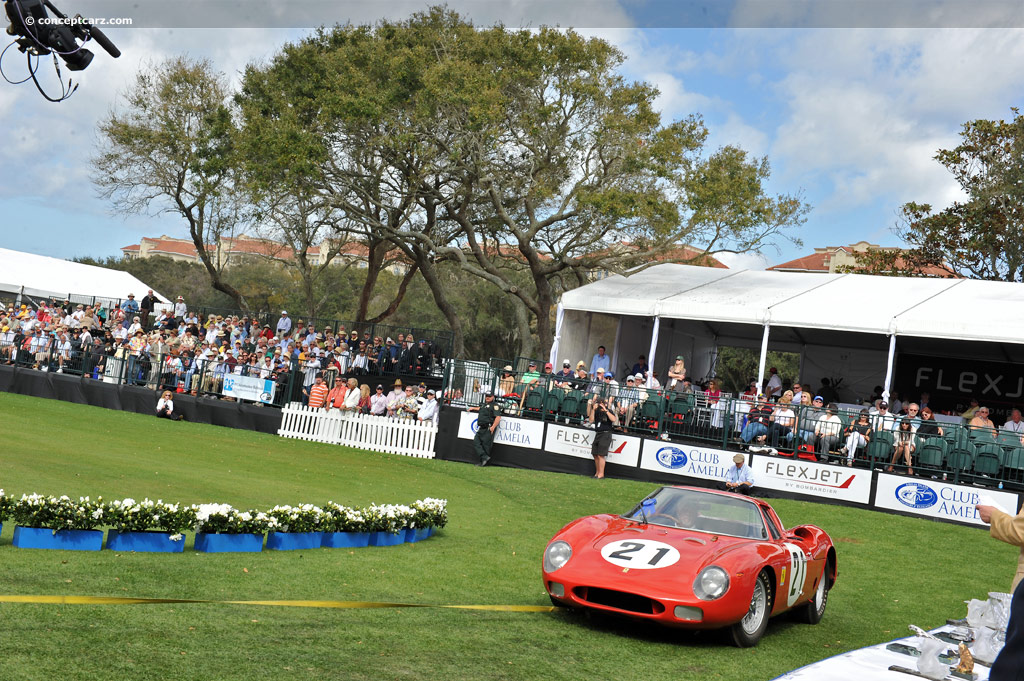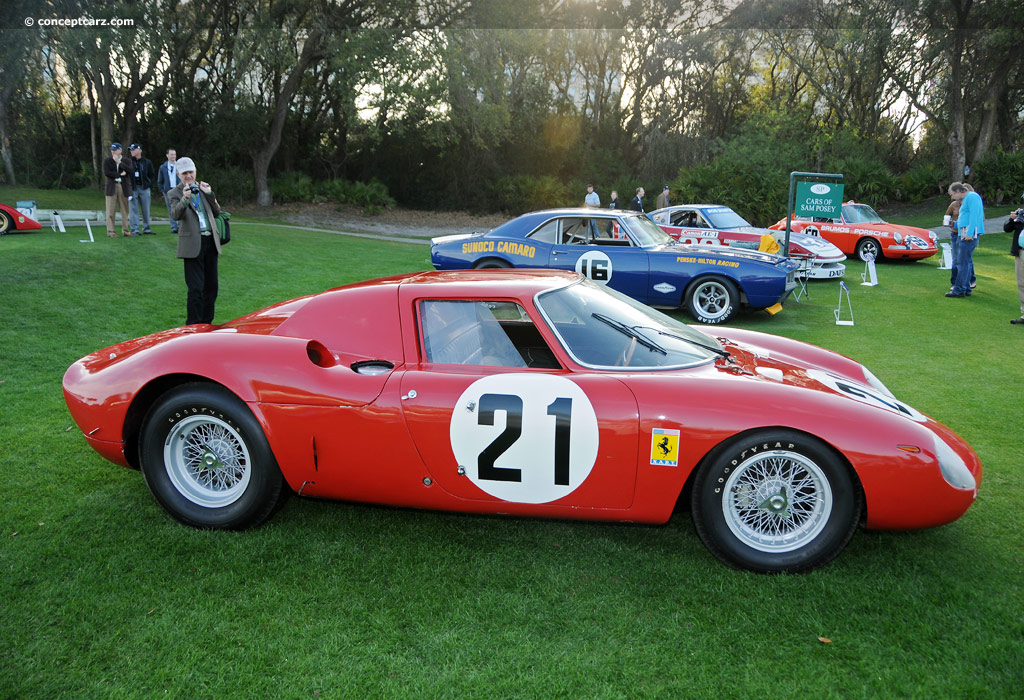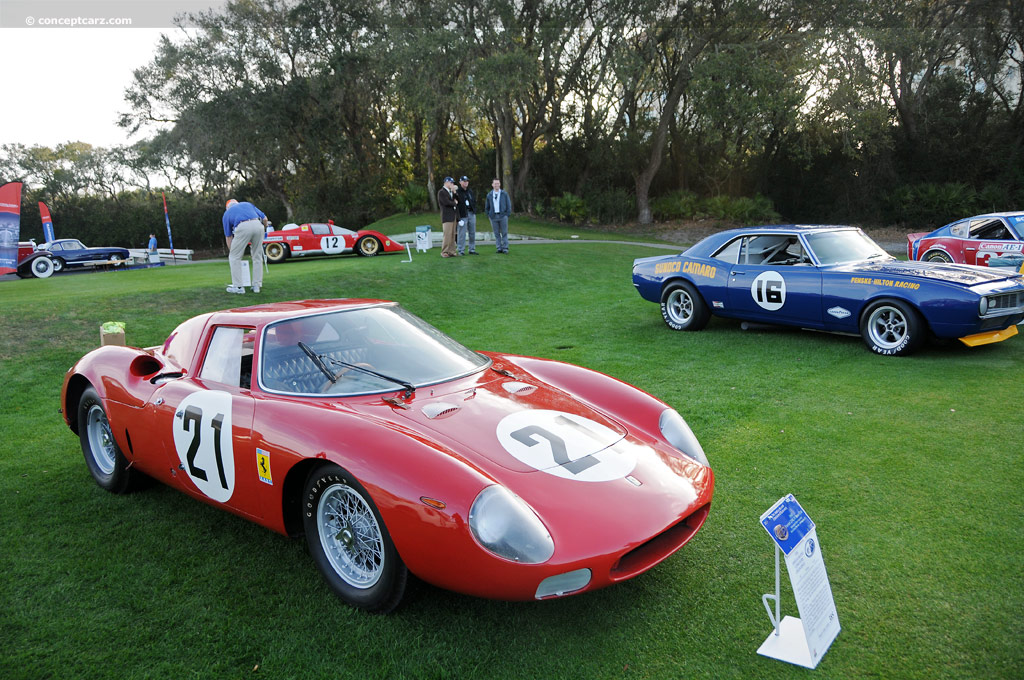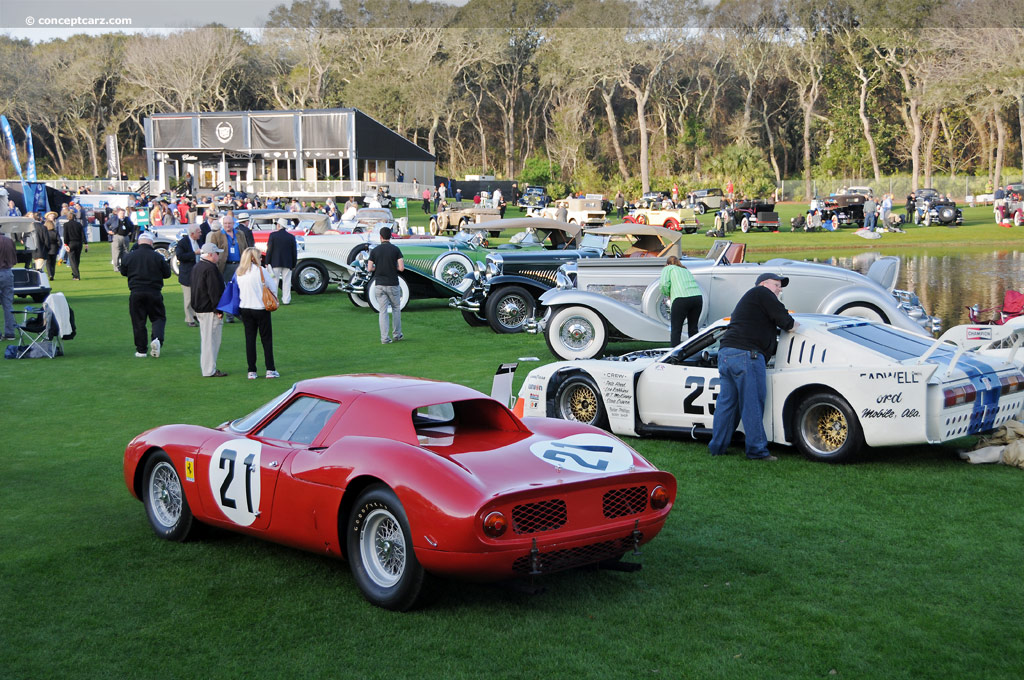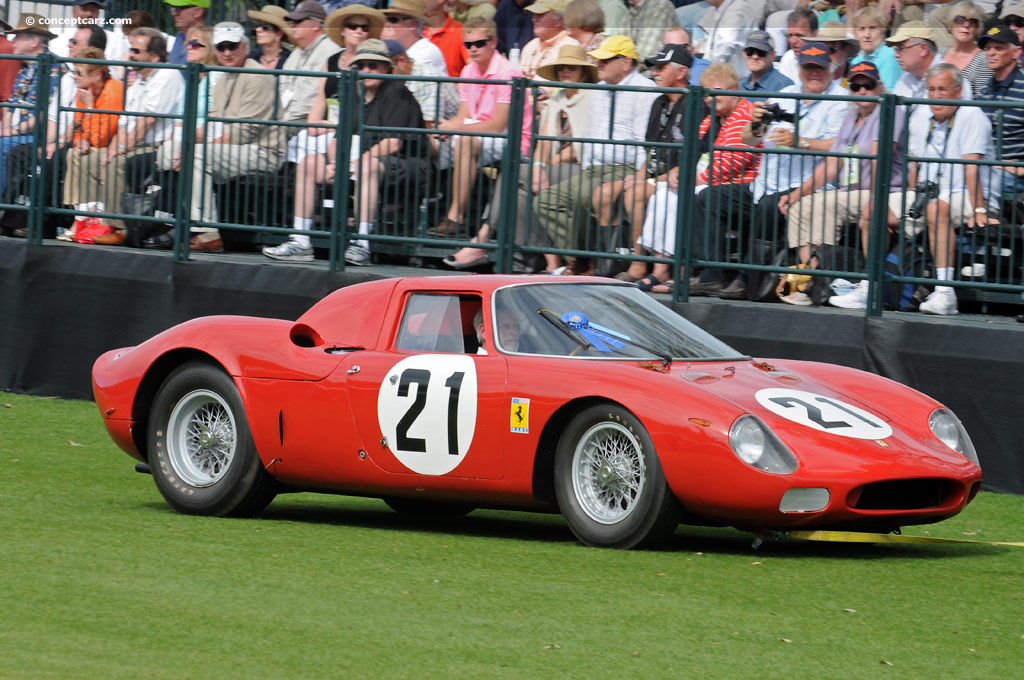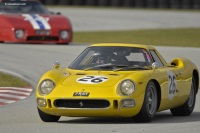Image credit: © conceptcarz.com (Reproduction Or reuse prohibited).
1965 24 Hours of Le Mans: A Cool Head in the Face of a New Threat
Heading into the 1965 24 Hours of Le Mans it had become clear Ford was intent on taking the fight to Ferrari. Ford would spare no expense to take the fight to the company it had intended to buy. Ironically, the North American Racing Team would enter a Ferrari that would include the talented Jochen Rindt to help quell the storm. It would prove to be the wall necessary to provide Ferrari its last victory at Le Mans.Ford had made his declaration of intent to remove Ferrari from its throne as the best at Le Mans. Immediately, the program would set into motion and Ford would quickly build examples of their Mark IIs and the new GT40s. The team's manager would even be able to encourage teams that would normally enter Ferraris to switch and enter GT40s instead. It was clear Ferrari had a target on its back.
Ferrari, of course, still believed in their own superiority, but they didn't totally dismiss the threat. Between their 330 P2, 365 P2, 275 P2 and 250 LM Ferrari had reason to believe it had more than enough to withstand the threat coming from Ford. Ferrari knew they had the cars capable of taking the overall victory, but still, they needed the drivers capable of getting the absolute best out of the cars over the whole of 24 hours.
The SEFAC Ferrari SpA factory team would field cars filled with Italian drivers and one lone Brit. It would be an imposing lineup, but there would be other teams entering Ferraris. The threat to Ferrari's reign at Le Mans was coming from an American automotive giant. In spite of the threat there was more than one reason why Ferrari could be confident. However, Ford was throwing the full weight of his company's resources behind the effort of beating the team from Maranello. It seemed as though all of America was arrayed against Ferrari. But this wasn't so.
While Scuderia Filipinetti would be one of those teams that would be encouraged to enter GT40s instead of the normal Ferraris, North American Racing Team would muddy the waters more than a little bit.
George Arents and Jan de Vroom were wealthy gentleman racers and they would become interested in backing Luigi Chinetti to create the North American Racing Team. Interestingly, the team would be created with the intent of promoting Ferrari in America.
Heading into the 1965 24 Hours of Le Mans, NART wasn't about to abandon its reason for being and the team would then field two different Ferrari chassis for the French classic. One of those entries would be a Ferrari 365 P2 to be driven by Mexican Pedro Rodriguez and Nino Vaccarella. The second entry would be a 250 LM driven by Masten Gregory, Ed Hugus and one Jochen Rindt.
Jochen Rindt had come to drive in Formula 2 during the early 1960s and would become very successful very quickly. Rindt's victory in the 1964 London Trophy race would solidify his growing reputation. Rindt would then go on to take part in his first Formula One World Championship event in his home grand prix, the Austrian Grand Prix. Qualifying in a Formula 2 car, Rindt would be impressive taking the middle position in the fourth row of the grid. In spite of a steering problem that would end his race after 58 laps, Rindt's Formula One career was certainly on the rise.
Rindt's talent as a driver was more than evident. His car control was already becoming something fellow drivers, as well as fans, were recognizing. He was certainly great in short runs, when pushing a car to its absolute limits was absolutely necessary, but would that be a good talent to have in a 24 hour sportscar race? Those with NART would believe Rindt offered just what the team needed.
The threat from Ford would not be something Ferrari would overlook, especially not after practice and qualifying. Terrible winds and driving rain had put an end to the first practice session, but, when qualifying came around, the MkIIs would show their stuff. Chris Amon and Phil Hill would absolutely fly in qualifying in their Ford Mk II. Hill would absolutely destroy the lap record. The fastest time set in qualifying would be 3:33.000 and would be more than 5 seconds faster than the best lap turned by the SEFAC Ferrari SpA pairing of John Surtees and Ludovico Scarfiotti.
The first of the NART Ferraris would be the 365 P2 driven by Rodriguez and Vaccarella. Their best lap in qualifying would be 3:41.000, a full 8 seconds slower than the MkII of Amon and Hill. The second NART Ferrari of Rindt and Gregory would be a further almost 5 seconds slower in the P4.0 250 LM. This meant the number 21 Ferrari would start from 11th on the grid.
The race was certain to be a memorable one even before it began as a quiet ceremony prior to the start of the race led to reminders of the terrible event that had transpired at the circuit exactly ten years earlier.
As the cars lined up along the pit wall it was clear that the Ferrari 250LM of Rindt and Gregory would have an incredible uphill challenge ahead of them. They could just look up toward the Dunlop Curve and see the 10 others that qualified ahead of them. The task ahead of the three men looked all the more formidable when Bruce McLaren took the lead over his Ford sister-car driven by Chris Amon. McLaren would hold onto the lead for more than two hours and would be putting together a tremendous charge at the front. However, it wouldn't be long after the two hour mark that McLaren's race would take a terrible turn as his Ford would have just one gear. The car of Hill and Amon would already make a visit to the pits as a result of transmission troubles. It seemed clear the Ford threat was taking it on the chin and was showing signs of being close to going down.
The pairing of McLaren and Miles would lose its lead and would eventually fall out of the race entirely after almost 5 hours of racing. Another of those to have taken the lead was the Maserati Tipo 65 driven by Jo Siffert and Jochen Neerpasch. However, they would be one of the first out of the race following damage suffered from an accident sustained just past the 3 hour mark.
The second through sixth hours of the race would be absolutely terrible for the Ford threat. The Ford France GT40 driven by Maurice Trintignant and Guy Ligier would be the first to drop out of the race after their gearbox failed them just into the 2nd hour of the race. The Rob Walker Racing GT40 driven by Bob Bondurant and Umberto Maglioli would make it halfway through the 3rd hour but would retire with engine troubles. At the same time, the Scuderia Filipinetti GT40 of Herbert Muller and Ronnie Bucknum would retire with engine head gasket problems as well. Then came the GT40 of McLaren and Miles. Two more GT40s, including the car of Phil Hill and Chris Amon, would retire by the 9th hour of the race.
Throughout the early part of the race the 250 LM of Rindt and Gregory would be running well having made a great start. At the end of the first lap Rindt would be running extremely well in 4th place. However, after just crossing the line Rindt would let the more powerful Ferraris and Fords go on ahead of him. Though known for his absolute abandoned style of racing, Rindt was showing great patience early on and was letting the race come to him.
While the Fords were self-destructing, the Ferraris were also running into problems of their own. The Dino 166 P of Giancarlo Baghetti and Mario Casoni would retire after 2 hours as a result of a blown engine. The tachometer would reveal that Baghetti absolutely destroyed the engine. Two more Ferraris would be lost around the 9th and 10th hours of the race while the 250LM of Ecurie Francorchamps would make it just past the 12th hour of the race before clutch failure brought their race to a halt. Still, Ferrari would be out front and would look as formidable as ever heading into the early morning hours of Sunday, the 20th of June.
In the pre-dawn hours at Le Mans the number 21 car of Rindt and Gregory were not even amongst the top five, but they were still powering their way through the French countryside without much in the way of any problems. But all of this would change when light began to emerge the circuit from its darkness.
Rindt and Gregory had been a distance behind the main factory Ferraris. However, one by one the Ferraris began to run into trouble as well. The 275 P2 of Lorenzo Bandini and Giampiero Biscaldi would be the first of the next wave to run into trouble. Little past 17 hours the engine on the car would begin to struggle and would lead to the eventual retirement of the car. During the next hour the 330 P2 of John Surtees and Scarfiotti, a car that had led a good deal of the time, would come to struggle with clutch and gearbox problems. Finally they too would fall by the wayside. Mike Parkes had been in the lead of the race during the nighttime hours and was certainly in a strong position with Surtees and Bandini out of the race. However, that 330 P2 would also run into battery problems that would lead to its eventual retirement heading into the final hour of the race.
The troubles experienced by the factory Ferraris would enable the private entry of Pierre Dumay and Gustave Gosselin to take over the lead of the race in their own Ferrari 250LM. They would be in a strong position holding onto a 2 lap lead over Rindt and Gregory in their 250LM.
The race had dwindled down to just a little more than the length of a Formula One race. This was Rindt's territory. And, despite having already raced for more than 20 hours Rindt would increase the pace until he would get the two laps back from Dumay and would actually come all the way around to threaten for the outright lead. It was clear Rindt's pace was proving more than Dumay could handle.
The talented Gregory partnered with Rindt was certainly more than most could bear. In the case of Dumay and Gosselin, these two would have no chance. The sun would be shining brightly and would shine down upon an intense battle between Dumay/Gosselin and Rindt/Gregory for the lead.
In spite of Rindt's and Gregory's pace, the last half of the race would be a game of catch-up as niggling issues caused the pairing to suffer from a couple of long stops that dropped them well back of the Ferrari of Dumay and Gosselin that had been running nearly without a problem at all.
One of those nagging problems caused the number 21 Ferrari to fall more than a couple of laps behind Dumay's Ferrari. However, because of the sheer pace and talent of Gregory and Rindt those two laps had been overcome and the out-right lead of the race became a possibility. However, just as the two closed the distance another frustrating issue would arise that would lead to the car suffering another long pitstop. By the time the car emerged back on track the possibility of racing for the lead would be gone and a deficit of over 2 laps was again the debt the two men faced.
It seemed the Dumay Ferrari, consisting of a relatively unknown driver pairing, would be in the lead and would look certain to be on its way to victory. However, the race was far from over.
One thing that would mark Jochen Rindt's career was his apparent lack of providence. Often faced with underachieving or unreliable cars throughout his Formula One career, Rindt would always be impressive with his speed and car control. But, even though he would be considered one of the best drivers in the world, the unreliability of his chosen cars would often fail to adequately reflect his talent. However, on the 20th of June, in a race where reliability was of utmost importance, it would be Rindt that would seem to have providence on his side compared to his competitors.
The number 26 Ferrari of Dumay and Gosselin would have their seemingly perfect race come all apart. While flying down the Mulsanne at top speed Gosselin would have a tire puncture that would lead to the tire absolutely shredding itself apart causing a great deal of damage to the rear of the car.
In spite of the puncture, Gosselin would keep his head and car under control and would make his way back to the pits, albeit at a much slower pace. By the time Gosselin even made it back to the pits the seemingly insurmountable lead he enjoyed was fast disappearing. After replacing the tire and working on the bodywork a little bit the car would return to the fray having a lead of only a handful of seconds over the number 21 Ferrari.
Things would go from perfect to wrong in the matter of minutes for the Ferrari of Dumay and Gosselin as the number 26 Ferrari would return to the pits for another long stop. This would allow Rindt and Gregory to take over the lead of the race and build up a nice advantage of their own.
Heading into the final hour of the race, Gregory and Rindt would be averaging a speed more than 2mph faster than that of Dumay and Gosselin. Because of the lengthy second stop that gave Rindt and Gregory the lead, the two NART drivers would have an advantage of more than 4 laps and would only continue to grow heading into the final half hour of the race.
Although Dumay had taken on the factory efforts and had been the one to come out the better, it would be Rindt and Gregory that would have more than 5 laps in hand heading into the final lap of the race. Heading around, the car would be flanked by others in the Le Mans tradition of being with the winner at the finish.
It would be an incredible race for Rindt and Gregory. The 24 Hours of Le Mans is a balancing act of speed and endurance. Rindt and Gregory were certainly known to have the speed. The only question that remained was 'did they also have the reliability'? They would prove the answer to this question to be a resounding 'yes'. It would be a victory handed to them late, but it would be a victory nonetheless well earned by the pairing. What's more the victory would prove to be the last for Ferrari overall at Le Mans.
Therefore, when Ferrari needed someone strong enough to weather the storm blowing in from Ford it would be Jochen Rindt that would prove to be the element Ferrari needed to keep from its reign of dominance from being blown away.
Sources:
'1965 24 Hours of Le Mans Results and Competitors', 24 Heures du Mans.
'Le Mans 24 Hours', Racing Sports Cars.
Triumph Spitfire—1965 Le Mans 24 Hrs (19th June 1965). YouTube Video. (1965).
'1964 World Drivers Championship', 1965 World Drivers Championship.
'Le Mans 24 Hours 1965', Sportscars.tv. .
Wikipedia contributors, 'Jochen Rindt', Wikipedia, The Free Encyclopedia, 11 March 2013, 04:48 UTC,By Jeremy McMullen
While most of the attention at the 1965 24-Hour of Le Mans was focused on the 'factory' team entries of Ferrari and Ford, it was a privately entered one-year-old 3.3-liter V12 Ferrari 250 LM which caused a major upset by winning, when the favored entries encountered difficulties.
Entered by Luigi Chinetti's North American Racing Team, American Masten Gregory partnered with future world champion Jochen Rindt of Austria for the unexpected win. The pair completed 347 laps of the 8.365 mile circuit, averaging 120.944 mph for the 24 hours.
This was the last occasion on which a Ferrari would win at Le Mans. In the years after its 1965 win, this 250 LM competed at the 24 Hours of Daytona in 1966 and 1968 and returned to the 24 Hours of Le Mans in 1968 and 1969, before its final race at the 24 Hours of Daytona in 1970, where it finished seventh. Shortly after its final race, the Indianapolis Motor Speedway Foundation acquired the Ferrari 250 LM.
Entered by Luigi Chinetti's North American Racing Team, American Masten Gregory partnered with future world champion Jochen Rindt of Austria for the unexpected win. The pair completed 347 laps of the 8.365 mile circuit, averaging 120.944 mph for the 24 hours.
This was the last occasion on which a Ferrari would win at Le Mans. In the years after its 1965 win, this 250 LM competed at the 24 Hours of Daytona in 1966 and 1968 and returned to the 24 Hours of Le Mans in 1968 and 1969, before its final race at the 24 Hours of Daytona in 1970, where it finished seventh. Shortly after its final race, the Indianapolis Motor Speedway Foundation acquired the Ferrari 250 LM.
No auction information available for this vehicle at this time.
Recent Sales of the Ferrari 250 LM
(Data based on Model Year 1965 sales)
| 1965 Ferrari 250 LM Berlinetta Chassis#: 06173 Sold for USD$1,445,004 2008 Automobiles of London |
Ferrari 250 LMs That Failed To Sell At Auction
1965 Ferrari 250 LM's that have appeared at auction but did not sell.
| Vehicle | Chassis | Event | High Bid | Est. Low | Est. High |
|---|
Vehicles With Comparable Market Values
Similar sales to the $1,445,004 range.
| 1938 Mercedes-Benz 540 K Norrmalm Cabriolet Chassis#:169389 Sold for $1,435,000 2024 Broad Arrow Auctions : Amelia |   |
| 1930 Duesenberg Model J Hibbard & Darrin Transformable Cabriolet Chassis#:2329 Sold for $1,435,000 2023 Broad Arrow : Monterey Jet Center |   |
| 2020 FORD GT HERITAGE EDITION Chassis#:2FAGP9EW2LH100098 Sold for $1,457,500 2023 Barrett-Jackson : Palm Beach | |
| 1988 PORSCHE 962C Chassis#:962-139 Sold for $1,435,000 2022 Gooding & Company : Pebble Beach |   |
| 1931 Stutz DV-32 Convertible Victoria Coachwork by LeBaron Chassis#:DV-PC-1224 Sold for $1,435,000 2022 Bonhams : The Quail Auction |   |
| 1939 Mercedes-Benz 540 K Cabriolet A by Sindelfingen Chassis#:408388 Sold for $1,435,000 2022 RM Sothebys : Monterey |   |
| 1935 Delahaye 135M Competition Drophead Coupe Chassis#:135M46060 Sold for $1,435,000 2022 Worldwide Auctioneers : Scottsdale Arizona |   |
| 1934 Packard Twelve Individual Custom Convertible Sedan Chassis#:902444 Sold for $1,435,000 2021 Worldwide Auctioneers : The 14th Annual Auburn Auction |   |
| 1986 March 86C Chassis#:86C-13 Sold for $1,435,000 2021 Gooding & Company : Pebble Beach Concours Auction |   |
| 1953 Bentley R-Type Continental Fastback Sports Saloon by H.J. Mulliner Chassis#:BC1LB Sold for $1,435,000 2021 RM Sothebys : Monterey |   |
| 1969 Lamborghini Miura P400 S Chassis#:4109 Sold for $1,435,000 2020 Gooding & Company : Amelia Island |   |
| 2011 Aston Martin One-77 Chassis#:SCFGFXXX1BGS17738 Sold for $1,440,625 2019 RM Sothebys : Abu Dhabi | |
| 1955 Mercedes-Benz 300 SL Gullwing Chassis#:198.040.5500780 Sold for $1,435,000 2019 Gooding & Company : Pebble Beach | |
| 1955 Mercedes-Benz 300 SL Gullwing Chassis#:198.040.5500378 Sold for $1,435,000 2019 Gooding & Company : Scottsdale Arizona | |
| 2019 MCLAREN SENNA Chassis#:SBM15ACAXKW800005 Sold for $1,457,500 2019 Barrett-Jackson : Scottsdale, Az. | |
| 2015 McLaren P1 Chassis#:SBM12ABA0FW000233 Sold for $1,435,000 2018 RM Sothebys : The Petersen Automotive Museum | |
| 1955 Mercedes-Benz 300 SL Gullwing Chassis#:198.040.5500800 Sold for $1,435,000 2018 RM Sothebys : Monterey | |
| 1929 Bentley 4½ Liter Sports Tourer Coachwork by Vanden Plas Chassis#:RL3427 Sold for $1,435,000 2018 Bonhams : Quail Lodge |   |
| 1965 Aston Martin DB5 Convertible Coachwork by Touring Chassis#:DB5C/1520L Sold for $1,450,000 2018 Bonhams : Greenwich Concours | |
| 1957 Mercedes-Benz 300 SL Roadster Chassis#:198-042-7500453 Sold for $1,454,754 2018 Bonhams : The Monaco Sale 'Les Grandes Marques à Monaco' |
1965 Ferrari 250 LM
• Additional valuation insight and sales data• History
• Specifications
• Image gallery
• Other Ferrari 250 LM model years
